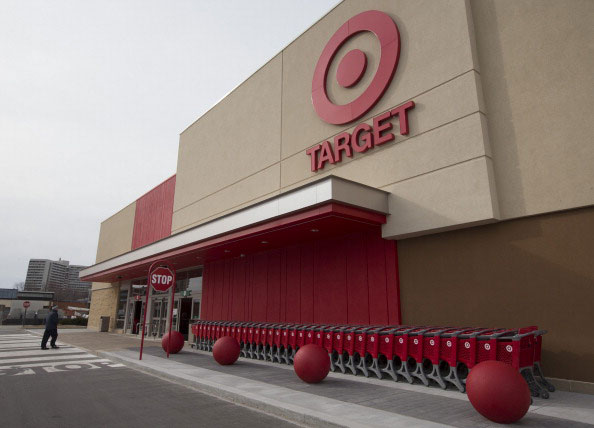Yes, its now-former chief executive Gregg Steinhafel has been fired. Yes, Target Corp. has taken a billion dollar loss on it Canadian operations. And yes, Target has been raked over the coals by Canadian consumers over perceived overpricing and inventory issues.

Ok, that’s bad. But Target’s performance in Canada perhaps isn’t going quite as disastrously as it may seem, a new report suggested on Monday.
And over the long term, the U.S. discount giant’s northern arm will prove to be a “lucrative” endeavour for the Minneapolis-based company.
Credit rating agency Moody’s says brand new Target stores in the United States take about a year to hit break even – “and this is with a well-developed distribution network” that can ship goods quickly to restock shelves.
Target took considerable flak shortly after launching its first Canadian stores just over a year ago for having bare shelves and items consumers said the chic-for-cheap retailer priced too high.
The chilly reception resulted in an unexpected pre-tax loss of $1 billion for Year One of Target’s Canadian roll-out (now at 124 stores and counting).
READ MORE: Cool reception for U.S. retailers
Still, Moody’s says the size of the loss would have been similar had Target raced to open stores in the U.S. as fast as it did here.
“Target was attempting to to execute something it had not done before, even in the U.S.,” Moody’s said.
The hype and attention of the launch (and fact that Target reports financials for Canada separately) “simply shines a laser on the performance.”

Get weekly money news
Moody’s said the company “should have realized that Canada would take time to become profitable,” and the agency itself now expects the first wave of stores to break even in early 2015.
End to ‘firesales’
After a tough 2013, which also saw Target torpedoed by a sizable theft of customer data in the United States (the bigger reason for Steinhafel’s resignation) a corner appears to have been turned.
For starters, large inventories on some items shoppers perceived as too expensive have now been cleared.
Target spent the tail end of 2013 and first months of 2014 heavily discounting to get them sold. “To that end, we visited three stores recently and it appears the ‘firesale’ clearances are pretty much over,” Moody’s analyst Charles O’Shea said.
- TD Bank moves to seize home of Russian-Canadian jailed for smuggling tech to Kremlin
- ‘Alarming trend’ of more international students claiming asylum: minister
- After controversial directive, Quebec now says anglophones have right to English health services
- Why B.C. election could serve as a ‘trial run’ for next federal campaign
And prices are being tweaked to smooth out glaring difference between Canadian and U.S. pricing, O’Shea said.
“Our recent store visits indicate that pricing was in fact not materially different than our experiences in the U.S.,” the analyst noted.
Tapped out consumers
It doesn’t mean Target’s challenges behind it. Far from it.
The biggest of them is something hovering over all retailers: consumer debt levels have bloated to all-time highs. While the rate of debt growth has slowed, for many a period of more restrained spending looms, experts say (see chart).
“This makes Target’s entry even more challenging at it tries to carve out a profitable niche,” O’Shea said.
READ MORE: Target takes aim at Canadians, but are we too tapped out?
Still, Moody’s ultimately sees Target integrating successfully, just as Walmart, Costo, Home Depot and Lowe’s have.
But “this did not happen overnight” for the other U.S. chains, Moody’s said. “And we do not expect Target to be an exception.”
WATCH: Target Canada’s first year — hit or miss?










Comments